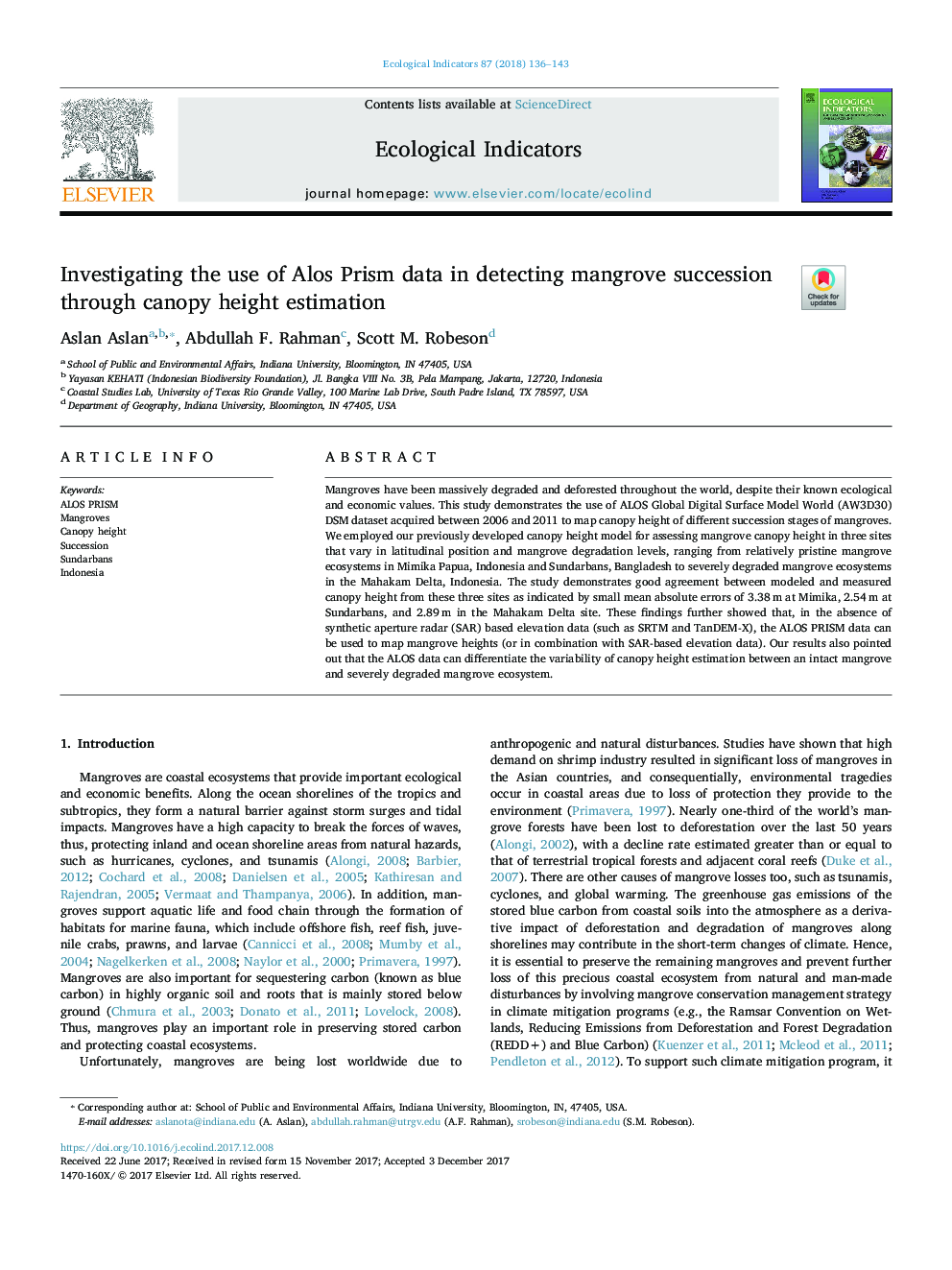| Article ID | Journal | Published Year | Pages | File Type |
|---|---|---|---|---|
| 8845580 | Ecological Indicators | 2018 | 8 Pages |
Abstract
Mangroves have been massively degraded and deforested throughout the world, despite their known ecological and economic values. This study demonstrates the use of ALOS Global Digital Surface Model World (AW3D30) DSM dataset acquired between 2006 and 2011 to map canopy height of different succession stages of mangroves. We employed our previously developed canopy height model for assessing mangrove canopy height in three sites that vary in latitudinal position and mangrove degradation levels, ranging from relatively pristine mangrove ecosystems in Mimika Papua, Indonesia and Sundarbans, Bangladesh to severely degraded mangrove ecosystems in the Mahakam Delta, Indonesia. The study demonstrates good agreement between modeled and measured canopy height from these three sites as indicated by small mean absolute errors of 3.38â¯m at Mimika, 2.54â¯m at Sundarbans, and 2.89â¯m in the Mahakam Delta site. These findings further showed that, in the absence of synthetic aperture radar (SAR) based elevation data (such as SRTM and TanDEM-X), the ALOS PRISM data can be used to map mangrove heights (or in combination with SAR-based elevation data). Our results also pointed out that the ALOS data can differentiate the variability of canopy height estimation between an intact mangrove and severely degraded mangrove ecosystem.
Related Topics
Life Sciences
Agricultural and Biological Sciences
Ecology, Evolution, Behavior and Systematics
Authors
Aslan Aslan, Abdullah F. Rahman, Scott M. Robeson,
